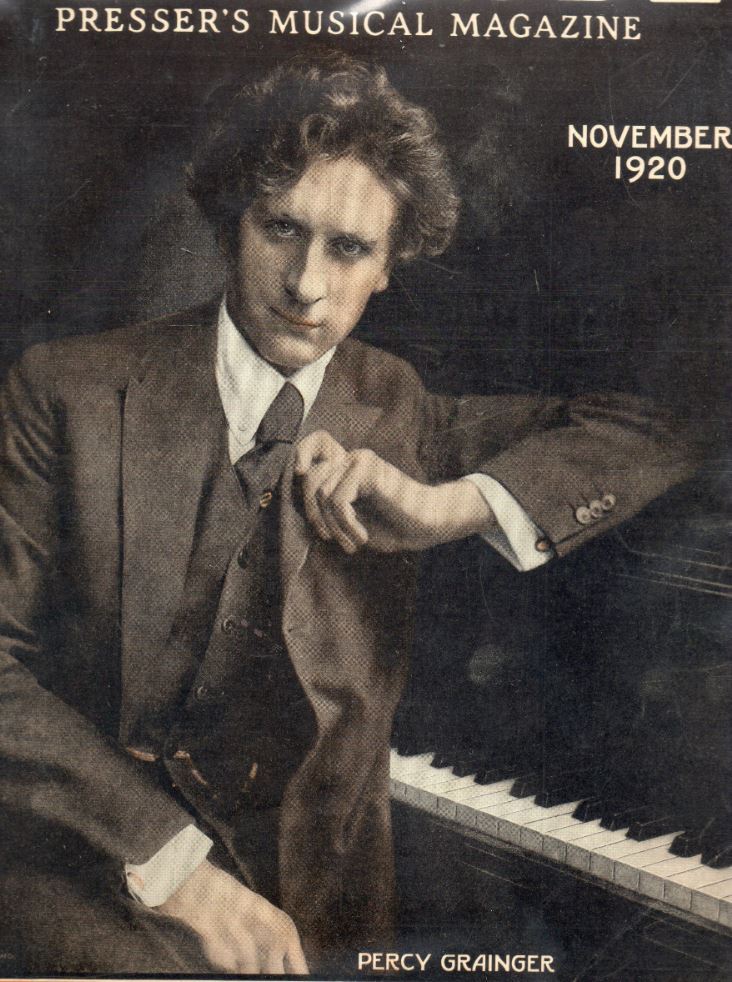 The Etude was an American print magazine published between October 1883 and 1957, roughly the lifetime of Percy Grainger. The magazine was published by Theodore Presser, the founder of the Music Teachers National Association.
The Etude was an American print magazine published between October 1883 and 1957, roughly the lifetime of Percy Grainger. The magazine was published by Theodore Presser, the founder of the Music Teachers National Association.
The Etude was aimed at all musicians, from novices to serious professionals. It printed articles ranging from popular interests to more-involved musical subjects --history, literature, gossip, politics—and contained write-in advice columns about musical pedagogy in general. It also printed sheet music and discussions by famous pianists.
In November 1920, Percy Grainger contributed his notes on how to play Edvard Grieg’s Norwegian Bridal Procession, including discussion of “two salient point of modern pianism: (1) the sustaining pedal, (2) non-stretching fingering.” Find the full text of the article here.
James Francis Cooke, editor-in-chief from 1909 to 1949, added the phrase "Music Exalts Life!" to the magazine's masthead, and The Etude became a platform for Cooke's somewhat polemical editorials. This change in editorial policy may have finished it. But in many way, the magazine moved with the times and embraced current technology, unequivocally supporting the phonograph, radio, and eventually television, and, by the late 1930s, fully embracing jazz. It was a true reflection of the heyday of piano.